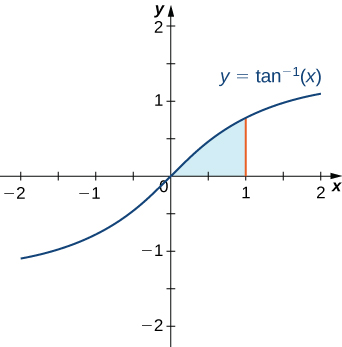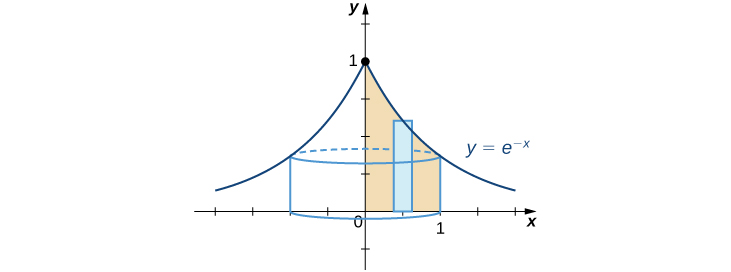| << Chapter < Page | Chapter >> Page > |
Now that we have used integration by parts successfully to evaluate indefinite integrals , we turn our attention to definite integrals. The integration technique is really the same, only we add a step to evaluate the integral at the upper and lower limits of integration.
Let and be functions with continuous derivatives on Then
Find the area of the region bounded above by the graph of and below by the -axis over the interval
This region is shown in [link] . To find the area, we must evaluate

For this integral, let’s choose and thereby making and After applying the integration-by-parts formula ( [link] ) we obtain
Use u -substitution to obtain
Thus,
At this point it might not be a bad idea to do a “reality check” on the reasonableness of our solution. Since and from [link] we expect our area to be slightly less than 0.5, this solution appears to be reasonable.
Find the volume of the solid obtained by revolving the region bounded by the graph of the x -axis, the y -axis, and the line about the y -axis.
The best option to solving this problem is to use the shell method. Begin by sketching the region to be revolved, along with a typical rectangle (see the following graph).

To find the volume using shells, we must evaluate To do this, let and These choices lead to and Substituting into [link] , we obtain
In using the technique of integration by parts, you must carefully choose which expression is u. For each of the following problems, use the guidelines in this section to choose u. Do not evaluate the integrals.
Find the integral by using the simplest method. Not all problems require integration by parts.

Notification Switch
Would you like to follow the 'Calculus volume 2' conversation and receive update notifications?